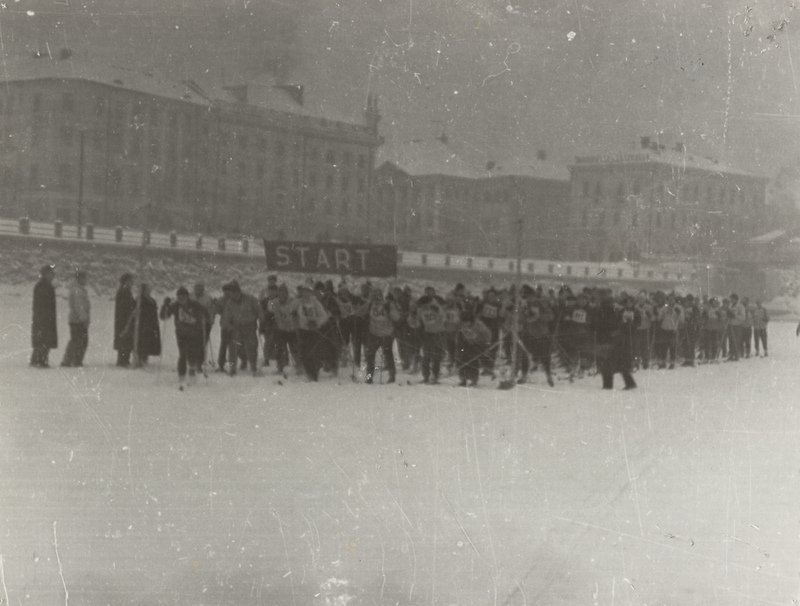The most legendary Tartu Maraton
During the 63-year history, the ski race has taken place 49 times in one way or another. In 2024, the Tartu Maraton will reach a new milestone - the 50th event. But which of these events has been written in bold letters to history?
Each Tartu Maraton is special in its own way and, most importantly, a personal conquest for each participant. Who remembers skiing kilometres in the crisp cold and enchanting sunshine, moustaches frozen into icicles; who remembers searching the last remains of snow in the pouring rain; for whom the memory is of winter festival in a frenzy of snow. A personal memory is always the strongest and most genuine.
Here are 5 Tartu Maratons, about which people still tell legends.
Number 5 - the very first:
1. Tartu Maraton (1960)
Tartu Maraton is one of the oldest competitions in the Worldloppet skiing calendar. It all started on January 16, 1960, when the first Tartu Maraton took place. True, at that time it was still called the Tartu-Kääriku Hike.
Winter arrived unusually early in Estonia, skiing was already possible in November. The historic first start was given directly from the centre of Tartu, from the ice-covered river Emajõgi. The finish line awaited in Kääriku, near Otepää. The trail map was replaced by information about the ascents and descents, given in advance by the trail master, and guides who drove along helped to prevent getting lost.
You could ski along the roads because there was a lot of snow and the roads were not sanded. The historic first Tartu Maraton was won by Rein Tikk, who took 3 hours and 27 minutes to cover 55 km. A total of 210 skiers participated.
Number 4 - the coldest:
28. Tartu Maraton (1996)
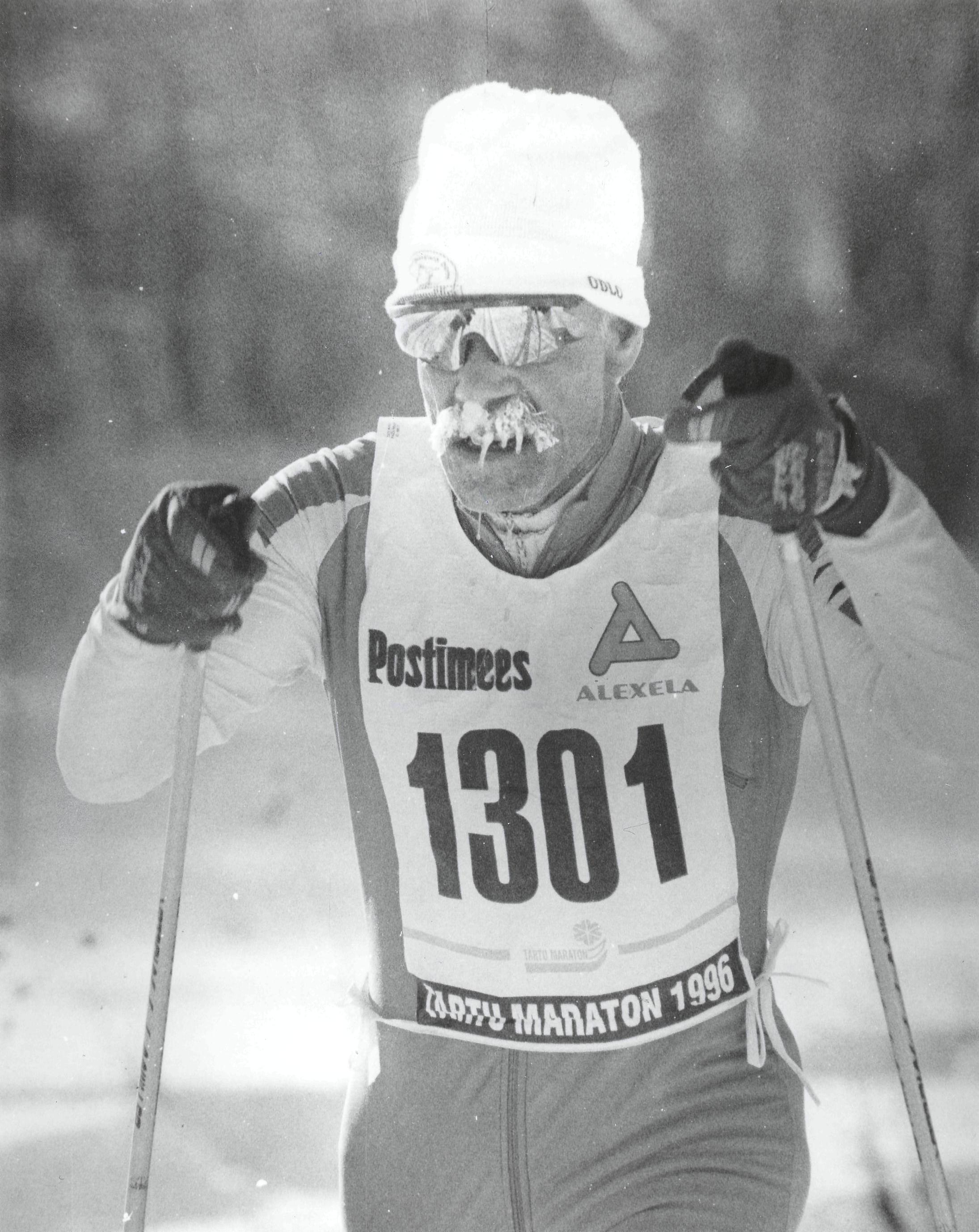 The first Tartu Maraton is also a very good candidate for the title of the coldest Tartu Maraton, but it can be assumed that the skiers had to brave the even greater cold at the 28th Tartu Maraton in 1996.
The first Tartu Maraton is also a very good candidate for the title of the coldest Tartu Maraton, but it can be assumed that the skiers had to brave the even greater cold at the 28th Tartu Maraton in 1996.
In the week before the marathon, one of the hardest frosts of the century hit Estonia, when the temperature dropped below minus 30 degrees on several nights, and even -37 degrees was measured in Jõgeva on Thursday. By Sunday morning, however, the cold calmed a little, and at 9 a.m. it was -25 degrees at the starting point in Matu. However, the start was still delayed for an hour and a half.
2204 skiers registered for the 60 km long 28th Tartu Maraton, 1788 finished. For the first time, the Tartu Maraton was broadcast live on Estonian Television. For the second year in a row, the legendary Swedish skier Håkan Westin became the winner (2h35min) in front of Andrus Veerpalu, the later two-time Olympic champion. Among the women, Maria Theurl won (3h5min).
Number 3 - the warmest:
33. Tartu Maraton (2002)
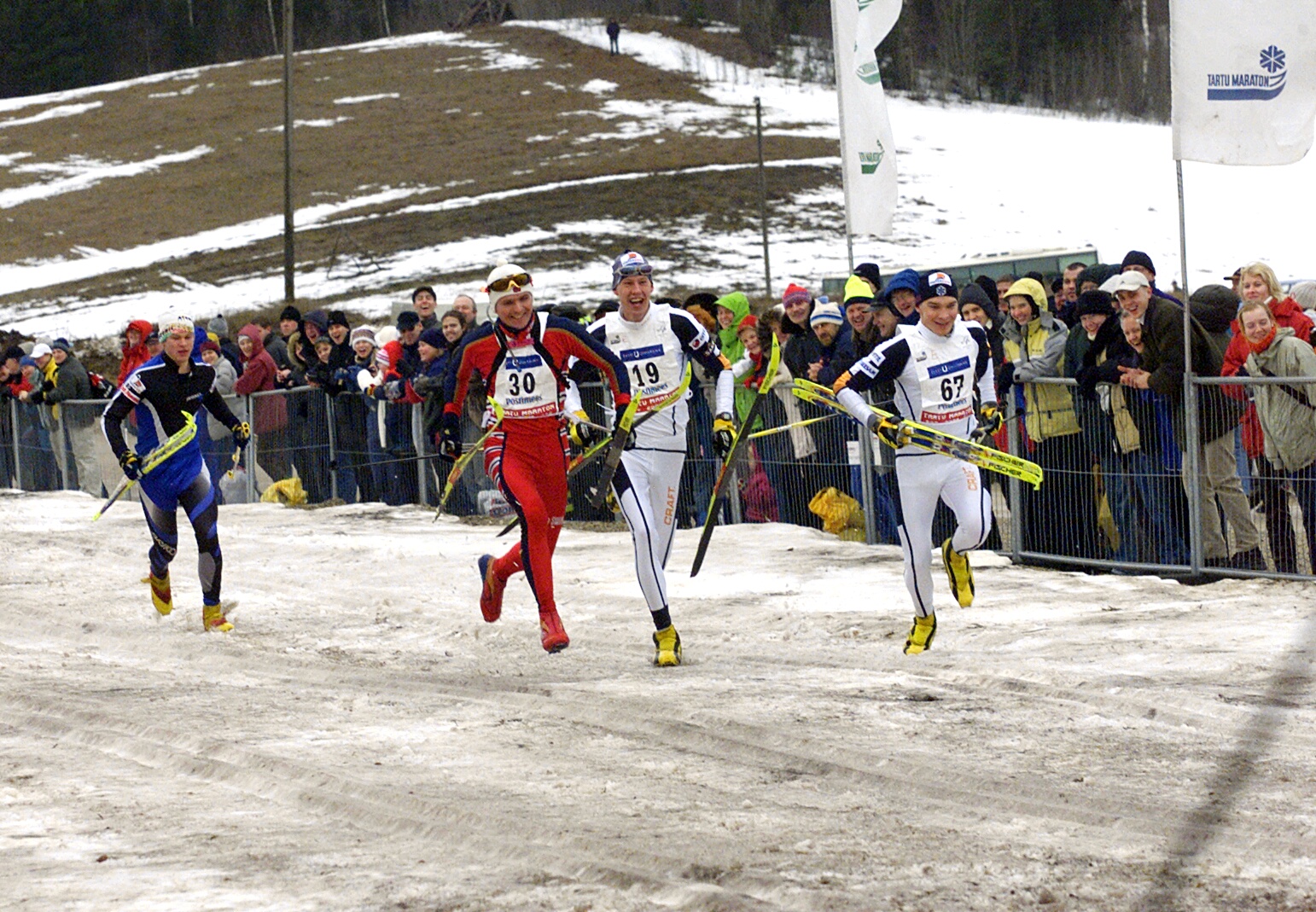
During the week of the marathon, the organizers hoped for an optimistic weather forecast, which promised to keep the last patches of snow for the day of the marathon. The reality was a bit sadder, it only rained and the snow disappeared. As a result of an unprecedented act of heroism, with the support of many helpers, it was still possible to assemble a ski trail in a shortened form, which started from Matu and ended in Arula, a total of 42 km.
The first question of those who arrived at the start on Sunday morning was "Where should the track be?" At first, it seemed that there were only muddy fields around. But the track was still there. A white strip of snow started in the middle of the green field. However, the ranking was not determined under such circumstances, the marathon was declared a hike.
But a miracle still happened, in the midst of rain and greenery, a ski marathon took place.
Number 2 - the most athletic:
48. Tartu Maraton (2022)
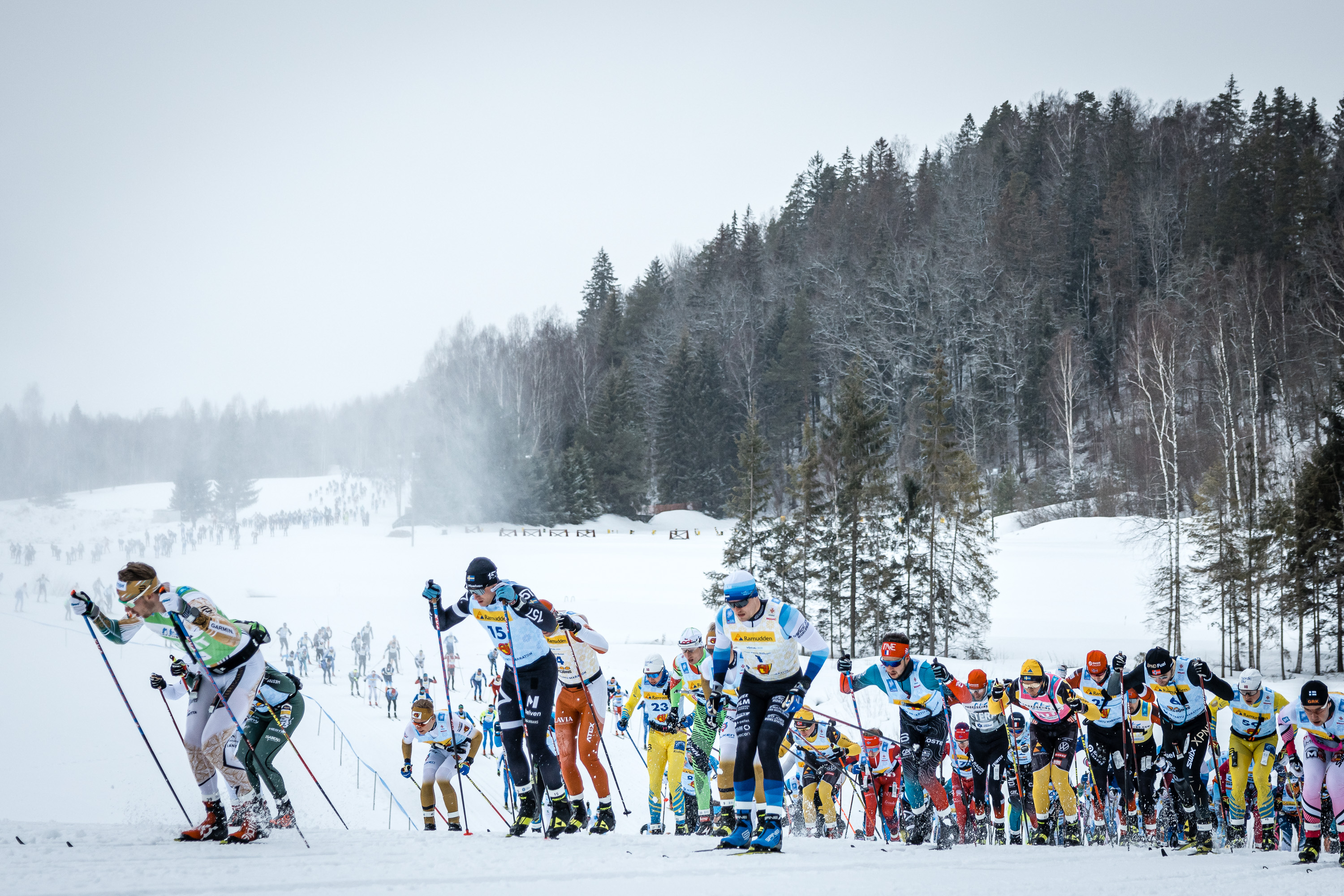 In terms of the level of competition, the strongest year and the year that brought together the most world skiers was 2022, the 48th Tartu Maraton. Estonia's biggest ski marathon was also part of the Visma Ski Classic Pro Tour series, and the world's best cross-country marathon skiers were present. The strength of the competition is also shown by the fact that the best Estonian in the end was only in 47th place (Henri Roos).
In terms of the level of competition, the strongest year and the year that brought together the most world skiers was 2022, the 48th Tartu Maraton. Estonia's biggest ski marathon was also part of the Visma Ski Classic Pro Tour series, and the world's best cross-country marathon skiers were present. The strength of the competition is also shown by the fact that the best Estonian in the end was only in 47th place (Henri Roos).
The 63 km long race was won by the Swedish Emil Persson (2h33min) among the men, Britta Johansson Norgren (2h50min) among the women. A total of 4303 skiers registered for the marathon.
The 48th Tartu Marathon was broadcast live for 5 hours to millions of viewers via television and web.
Number 1 - the largest:
22. Tartu Maraton (1986)
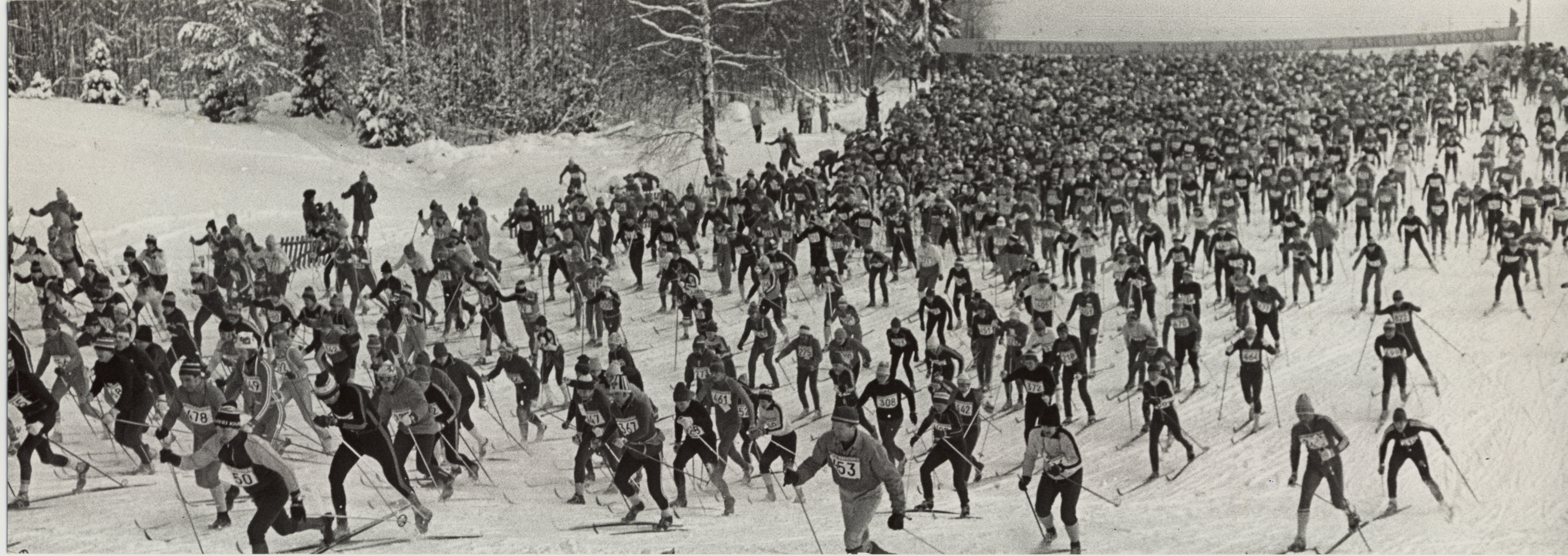 The record for the number of participants in the Tartu Maraton dates back to 1986 when the limit of 12,000 registered skiers was reached in November. A total of 9,858 skiers finished the 60 km ski marathon. This is still the unbeaten record of participants at the Tartu Maraton. Moreover, at that time Tartu Maraton was also one of the largest ski marathons in the world in terms of the number of participants.
The record for the number of participants in the Tartu Maraton dates back to 1986 when the limit of 12,000 registered skiers was reached in November. A total of 9,858 skiers finished the 60 km ski marathon. This is still the unbeaten record of participants at the Tartu Maraton. Moreover, at that time Tartu Maraton was also one of the largest ski marathons in the world in terms of the number of participants.
From the start, for up to one kilometre, the skiers had 27(!) trails to use. Participants were served by 1500 buses. Everything was bigger than ever. The golden age of the marathon was illustrated by the saying of the legendary sports reporter Lembitu Kuuse: "Every true Estonian man has seen the Savoy ball in the Estonian National Opera, owns a leather jacket and has skied through the Tartu Maraton".
The 60km long race, which started in Matu and ended in Elva, was won by Nikolai Politajev (2h26min) for men and Ingrid Tikk (3h2min) for women. For the first time, the winner used an innovative skating technique. Already the following year, a partial restriction on the use of skating technique was introduced (within the first 14km). Tartu Maraton in full classic technique first took place in 1991.
A new chapter will be written on February 17-18, 2024, when the 50th Tartu Maraton will take place. Then everyone can write their name in bold letters in the history of skiing by participating in the legendary race.
Text by skiing enthusiast Peeter Liik

